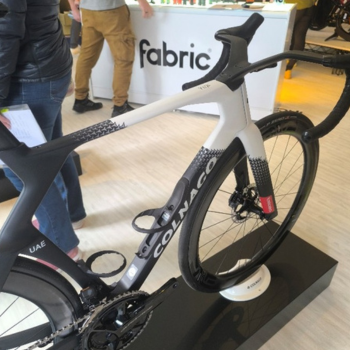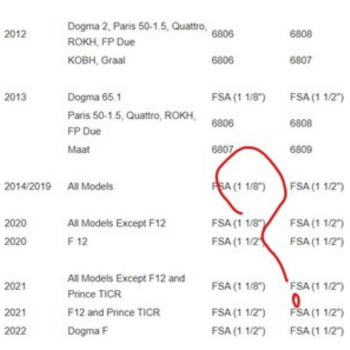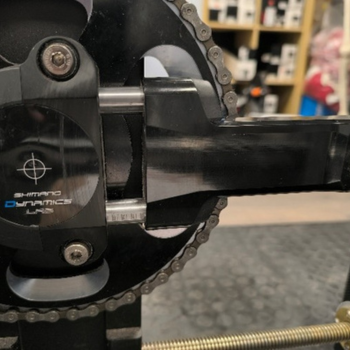Avoid Costly New Bike Buying Mistakes: 5 Tips from a Pro Bike Fitter and Mechanic
 As a professional bicycle mechanic and certified bike fitter, I work with a wide range of cyclists—from weekend warriors to seasoned racers. One thing I see all too often is customers running into costly and frustrating issues with their bikes—many of which could have been avoided with a little insider knowledge before they made a purchase.
As a professional bicycle mechanic and certified bike fitter, I work with a wide range of cyclists—from weekend warriors to seasoned racers. One thing I see all too often is customers running into costly and frustrating issues with their bikes—many of which could have been avoided with a little insider knowledge before they made a purchase.
In this post, I’ll walk you through the most common (and expensive) problems I see, and offer practical tips to help you choose the right bike for your needs—saving you money, time, and future headaches.
1. Know Your Purpose: Why Do You Want the Bike?
Before getting dazzled by aero frames and carbon everything, ask yourself:
What will you actually use the bike for?
Modern road bikes, especially aero models, are often designed for riders chasing marginal gains—those last few watts of speed. But if you’re not racing, wearing skinsuits, or optimizing every detail like tire rolling resistance and tubeless setups, you might not need an expensive aerodynamic bike with high-maintenance components.
Aero bikes often come with fully integrated cable routing, which, while sleek, significantly increases the time and cost of servicing. The cables run through the headset bearings, making even basic maintenance—like replacing cables or servicing bearings—much more labour-intensive and costly.
➡️ Bottom Line: If you’re not already maximizing simple performance upgrades (like better tires or aero clothing), a complex aero bike might not be the best return on your investment.
2. Beware of Proprietary Parts and Poor Parts Support
 Many modern bikes use proprietary components, especially for internal cable routing systems. These might include unique plastic cable guides or headset parts that wear out over time. The problem? They’re not always available when you need them—especially if the bike is a few years old.
Many modern bikes use proprietary components, especially for internal cable routing systems. These might include unique plastic cable guides or headset parts that wear out over time. The problem? They’re not always available when you need them—especially if the bike is a few years old.
I’ve seen customers sidelined for months in peak riding season simply because they couldn’t source a small but crucial part. If the manufacturer doesn’t support older models or lacks a spare parts catalogue, you’re out of luck.
What to Check Before You Buy:
- Does the brand have an online archive of older bike models?
- Do they publish parts lists, specifications, and service manuals?
- Are spare parts readily available, or are they unique to this brand and model?
- Can you find headset bearing sizes and specs, not just vague terms like “1 1/8””?
✅ Pro Tip: See if you can go to a site like airevelobearings.com and source headset bearings by size from the bike’s manual. If you can’t find that info, consider it a red flag.
3. Will the Bike Actually Fit You?
This one’s huge—and too often overlooked.
 I strongly recommend getting a professional bike fit before buying a new bike. It’s far cheaper to adjust your fit on paper than it is with parts swaps after you’ve already made the purchase. (More on that here: Why Have a Bike Fit Before Buying)
I strongly recommend getting a professional bike fit before buying a new bike. It’s far cheaper to adjust your fit on paper than it is with parts swaps after you’ve already made the purchase. (More on that here: Why Have a Bike Fit Before Buying)
I often see customers choosing the wrong size simply because their preferred colour or model was in stock, or because a friend said “you can always make a small bike bigger.” Not so simple when your new bike comes with an integrated bar and stem and hydraulic hoses routed through it.
One customer recently needed a longer stem to correct a fit issue—only to find that:
- The correct size cockpit was £600
- It was out of stock for 4 months
- Fitting it would cost another 3 hours of workshop labour
➡️ Get the right frame size, crank length, bar width, and stem length upfront. It’ll save you hundreds and give you a better ride.
4. Consider Long-Term Compatibility and Obsolescence
Bike tech moves fast, and what’s “hot” today might be unsupported tomorrow. A heavily discounted bike with rim brakes and 11-speed gearing might look like a bargain—but it could be hard to upgrade or repair in a year or two.
For example:
- SRAM no longer makes rim brake-compatible electronic groupsets.
- Shimano’s latest Ultegra and Dura-Ace are 12-speed only.
- Finding a 165mm 11-speed crankset to match your groupset can be tough.
If you’re not concerned about having the latest tech, these bikes can still be a great deal—but be aware of the limited upgrade path and potential parts scarcity.
Final Thoughts
The tips above can help you avoid buyer’s remorse and choose a bike that fits your needs, your body, and your maintenance comfort level.
If you’re unsure, start with a bike fit — it’s the smartest first step to finding the right bike, not just the best-looking one. And don’t hesitate to ask your local bike mechanic (or me!) for input before clicking “buy now.”
Need Help Choosing or Fitting Your Next Bike?
I offer professional bike fitting and mechanical services tailored to your riding goals and experience level. Contact me to book a fit or ask any questions before making your next big purchase.
Thank you for reading our latest blog, Avoid Costly New Bike Buying Mistakes: 5 Tips from a Pro Bike Fitter and Mechanic. Or is it? If you have any question please Get In Touch.
Scott
fitmybike.co.uk
